Publisher's Synopsis
The first known federal execution under this authority was conducted by U.S. Marshal Henry Dearborn of Maine on June 25, 1790. He was ordered to execute one Thomas Bird for murder on the high seas. In coordinating this, Dearborn spent money on building a gallows and coffin.
Later, as U.S. Marshals saw more death sentences imposed, a few districts resorted to more permanent equipment. Nix of Oklahoma had a portable scaffold that could be easily packed for travel in 1894.
The bird was convicted of murdering his master, John Connor, captain of the slave ship Mary, off the coast of Africa. The Mary's crew then sailed to the coast of Maine. When captured by Portland's Naval Officer, there were but four people aboard: Bird; Hans Hanson, 19, of Norway; Josiah Jackson, 32, of Newton, MA; and an African boy known only as Cuffey.
Bird and Hanson were held in the Cumberland County Jail for nearly a year pending the organization of the U.S. Federal Court system. Jackson was immediately released and later testified for the prosecution. Hanson was charged with aiding and abetting in the death of Captain Connor and was acquitted.








